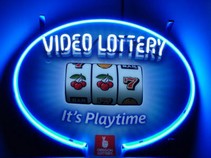 Alberta can lay claim to having the first legalized casino gaming in Canada, albeit in a temporary form. In 1967 the provincial government initiated several laws that seemed to open the door to casino games even though they were forbidden by the Penal Code. In the summer, during the Edmonton Exhibition, the Silver Slipper Saloon was opened as part of the two-week celebration. The general manager of the exhibition later indicated that he had taken payoffs from the carnival company that ran the games, that is, the Silver Slipper. Amendments to the national code in 1969 helped regulate Alberta gaming. The attorney general took control over licensing charitable bingo games and raffles. In 1975, the attorney general’s office opened the door to casinos once again as it first approved a casino for a charity event supporting a summer camp. A license was then given for a casino at the Calgary Stampede. A flood of applications for casino events overwhelmed the attorney general, and he quickly created a special Gaming Control Section to regulate the gaming. Rules were set into place over the next two years. In 1981, a new Alberta gaming commission took over all licensing powers.
Alberta can lay claim to having the first legalized casino gaming in Canada, albeit in a temporary form. In 1967 the provincial government initiated several laws that seemed to open the door to casino games even though they were forbidden by the Penal Code. In the summer, during the Edmonton Exhibition, the Silver Slipper Saloon was opened as part of the two-week celebration. The general manager of the exhibition later indicated that he had taken payoffs from the carnival company that ran the games, that is, the Silver Slipper. Amendments to the national code in 1969 helped regulate Alberta gaming. The attorney general took control over licensing charitable bingo games and raffles. In 1975, the attorney general’s office opened the door to casinos once again as it first approved a casino for a charity event supporting a summer camp. A license was then given for a casino at the Calgary Stampede. A flood of applications for casino events overwhelmed the attorney general, and he quickly created a special Gaming Control Section to regulate the gaming. Rules were set into place over the next two years. In 1981, a new Alberta gaming commission took over all licensing powers.
As gaming developed, Alberta adopted the model used in British Columbia. Charities could have casino events, but they had to be held in permanent facilities that were operated by private parties. In the 1990s, the number of such facilities grew to nearly a score. There are five casinos in Edmonton; four in Calgary, and others spread around the province. Until 1998 they were not allowed to have slot machine gaming, and the charities paid a fixed fee for having an event. When the government installed machines, a new revenue division based upon play was instituted. As the government owns the machines, it keeps a majority of machine revenues. Although no serious consideration is being given to the creation of large commercial casinos, proposals have been made for wide-open, large-scale casino gaming on the First Nations reserve lands.
Alberta has many other types of gambling, including all forms of pari-mutuel operations, both on-track and offtrack. Raffles and pull tabs are sold by charities. The most prevalent form of gambling, however, is found in the bars and taverns of the province. By 1999 more than 6,000 video lottery terminals were operating in 1,200 locations, producing about $300 million in revenue, which is about 70 percent of the gaming revenue produced in the province. In that year the popular machines (which provide an average gaming revenue of $50,000 a year) accounted for a per capita gaming participation of about $1,300 per adult, the largest in Canada and North America, with the exception of Nevada. Studies have also revealed that Albertans have the highest rate of problem gambling in Canada. Efforts to ban the terminals have been concerted, with local elections called in 1998 in most of the cities. Only in a few smaller cities did the voters choose to ban the machines.
|
|